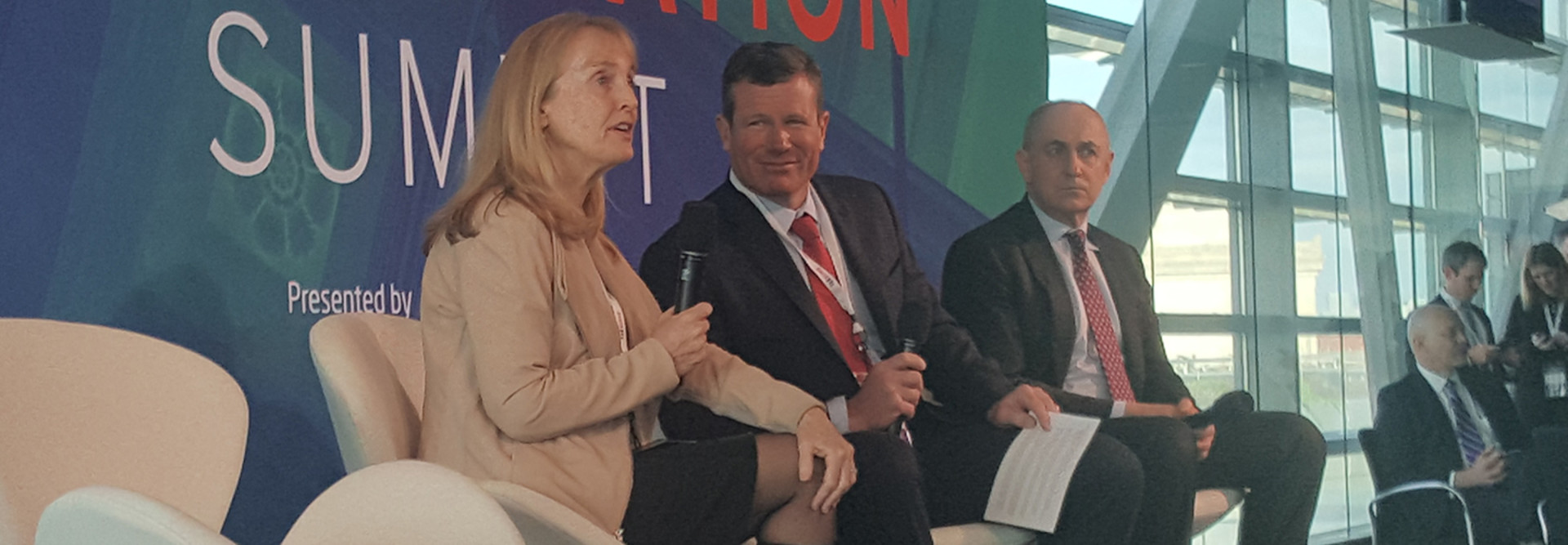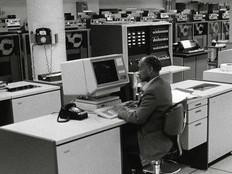USDA Kicks Off IT Modernization via Centers of Excellence
After months of planning, the government’s new IT modernization “Centers of Excellence” are being put to use.
The Agriculture Department kicked off the effort to use the CoEs last week, according to Joanne Collins Smee, who heads the General Services Administration’s Technology Transformation Services, the unit running the CoEs.
The five CoEs are based around cloud adoption, IT infrastructure optimization, customer experience, service delivery analytics and contact centers. The goal of the centers is to accelerate modernization by leveraging private sector expertise and talent, and to provide agencies with consulting and IT engineering services to radically improve the way they design services and interact with their citizens.
In mid-March, the GSA awarded five contracts to help the USDA go through a discovery and assessment phase of using the CoE model to determine how best to move forward on modernization.
The CoEs are kicking off at the USDA, but the GSA wants to use the lessons learned there and apply them across the government as agencies fulfill the recommendations of the White House’s IT modernization report, which was released in December. Collins Smee, speaking April 5 at FedScoop’s IT Modernization Summit in Washington, D.C., said that the CoEs are designed to handle “some of the big rocks we have in the federal government” via centralized talent and will do so in an “industrialized manner.”
SIGN UP: Get more news from the FedTech newsletter in your inbox every two weeks!
USDA Starts on IT Modernization Path
The USDA and the GSA have developed an “incredible working relationship,” Collins Smee said, praising the work of Agriculture Secretary Sonny Perdue, Deputy Secretary Steve Censky and CIO Gary Washington.
Washington and his team have focused on effecting change at the “root level” of the agency, Collins Smee said. Washington’s office hit upon a “brilliant idea” the GSA will now use at other agencies, she added.
The USDA ran a “top talent” contest for 10 IT leaders across the agency who will now be embedded in the CoEs for the next two years and who will report to Collins Smee. She said these employees are “leaders already recognized in IT at USDA.”
“They will continue to have the DNA and really effect that cultural change within the organization,” Collins Smee said. “Never mind the other stroke of brilliance is they know where everything is buried with the organization, right? They’re top talent across USDA. It was a brilliant idea, and we were noodling on this thing about culture change and how do we effect the best culture change.”
Chris Liddell, deputy chief of staff for policy coordination at the White House, said the journey the government is on is “probably the biggest IT modernization” of all time, since it involves 2 million federal employees and updating technologies that in some cases are decades old.
Liddell, speaking alongside Collins Smee, said that the effort is “orders of magnitude bigger than past modernizations,” though he acknowledged that it builds on efforts of the Obama administration. Liddell formerly ran the White House’s American Technology Council and is a strategic member of the Office of American Innovation, serving as one of the administration’s point people on IT modernization.
Technology has evolved faster in the private sector than the government has been able to adopt new IT, Liddell said. “On a relative basis, we’re falling behind,” he added.
A key goal of the Trump administration is to set up the “institutional capacity that will effect change over the long term,” Liddell said. He noted that IT modernization is not something that is likely to be solved in a year or two, or even in an administration. That’s why the CoE model is critical, so that best practices can be spread across the government.
Collins Smee, who spent a dozen years in various rolls at IBM before coming into government in January 2017, said she wasn’t expecting to find the “caliber of technical talent” that exists in the government — people who are “incredibly smart and want to do good things.” The goal is to harness that power, she said.
The Goals of Federal IT Modernization
Liddell agreed that there are “lots of people doing great things” across the government to upgrade IT, but that they were “not necessarily coordinating with each other.” The Office of American Innovation set up weekly meetings last year with lots of stakeholders to coalesce around a common set of terminology, goals and objectives, Liddell said. Those efforts don’t change culture but enable it, he said.
Agencies should upgrade their technology so that they can update citizen-facing services, Liddell said. “The economics of what we do is important,” he said. “But if we did nothing else than make citizen-facing services better, that would be a huge contribution. If we can make their lives 5 to 10 percent better by digitizing services, or making digital services from 2005 more circa 2020, that would make the individual, average person’s life fundamentally better, and that would be a massive contribution.”
Collins Smee acknowledged that the government is “not going to bring in hordes of more IT people.” Agencies need to enhance the capabilities of IT workers who are already in place, and the CoEs are part of the effort to “get the outcomes citizens deserve,” she said.









